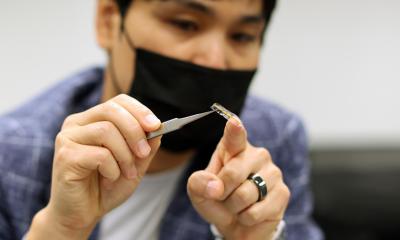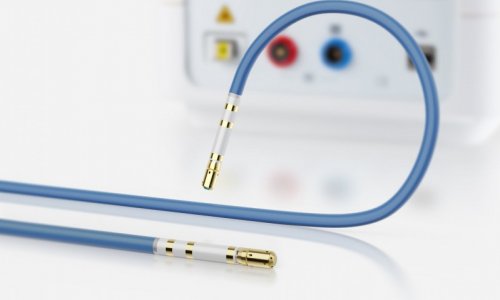Minimizing heart surgery to maximize patient outcomes
The increasing importance of interdisciplinary cooperation between heart surgeons and interventional cardiologists was convincingly demonstrated during the Medica Congress session dedicated to “Update in Valvular Heart Disease.”
The co-chairs for the session presented by the heart center at the University Hospital of Düsseldorf each represented one side of this collaboration with Prof. Dr. Malte Kelm, director of the Department of Cardiology, Pneumology and Angiology and Prof. Dr. Artur Lichtenberg, director of the Department of Cardiovascular Surgery.
Today physicians can consider three approaches when presented with a patients suffering from valve disease. Depending on the diagnosis of the valve deficiency, and critically, depending on an assessment of the patient’s age and health, the heart team may choose medical therapy, traditional open heart surgery a catheter-based intervention.
Heart surgeon Hiroyuki Kamiya demonstrated new techniques for ‘keyhole surgery’ in a presentation, “Mitral valve disease - minimal invasive surgery.”
Borrowing techniques from colleagues in endoscopy, Dr. Kamiya showed how the heart can be accessed using a four centimeter incision in the right part of the chest near the sternum through which he inserts canula and a high-definition camera for viewing the targeted area.
Studies consistently find surgical repair to be clearly superior to valve replacement, he reported, with a 2 mortality mortality compared to 7.8 percent for replacement.
The benefits for the patient are superior as well with less bleeding, less trauma and better long-term outcomes, he said, adding that “the cosmetic result is fantastic.,” and showing a photograph of a patient with only a small scar.
Dr. Tobias Zeus, agreed with his colleague that surgery continues to be the gold standard for treating valvular deficiencies.
Yet not all patients can undergo surgery due to risk factors and co-morbidities, such as pulmonary disease or vascular disease.
“The valve is not their only problem, and interventional mitral valve repair allows us to consider treatment for patients who would never leave the operating table if they underwent surgery, or perhaps would not survive even in the intensive care unit after the procedure,” he said.
Presenting alternative therapies in his presentation of “Mitral valve disease - interventional therapy,” Dr. Zeus said the options include remodeling of the mitral valve complex, remodeling of the mitral valve anulus, and double orifice mitral valve repair.
These procedures are so novel that only one of the devices he presented has regulatory approval and is being used in 30 heart centers in Germany.
Others are being used in Düsseldorf as part of investigational pre-clinical study, “and there is a lot of work yet to be done,” he said.
Turning to the aortic valve, two approaches were demonstrated for placing an artificial valve to replace the patient’s failing valve.
Both techniques are not only approved for routine clinical use but have seen a rapid adoption by heart centers across Germany.
Interventional cardiologist Marc Merx presented valve placement using a catheter to reach the heart through the femoral artery while his colleague at the University of Düsseldorf Hospital, Payam Akhyari, demonstrated the transapical approach where the heart is accessed through the chest.
Dr. Merx said that among the patients who have co-morbidities, studies show that any form of surgical intervention can extend their life for five years, “an enormous increase considering that most are well over 70 years of age.”
Yet among these patients, only 20 to 30 percent will receive surgery.
Transcatheter Aortic Valve Implantation (TAVI) presents a great hope for life for the remaining 70 to 80 percent of these patients.
In the transfemoral approach, the valve is mounted on the catheter delivery system and inserted into the femoral artery, tracked over the aortic arch and delivered to the site of the patient's diseased valve.
The physician uses echocardiographic and fluoroscopicimaging to guide this intervention and the minimally-invasive approach can be performed under local anesthesia, which eases the risk for patients with pulmonary conditions.
Once the valve arrives at the site of the diseased valve, the artificial valve is positioned and after verifying how it is seated within the natural valve, the physician fully expands the stent structure to fix the valve in position.
While there are two valves approved for use, there are more than 20 new TAVI devices at various stages of preclinical testing.
19.11.2010










